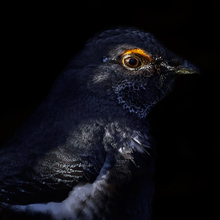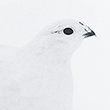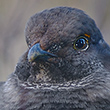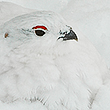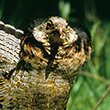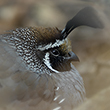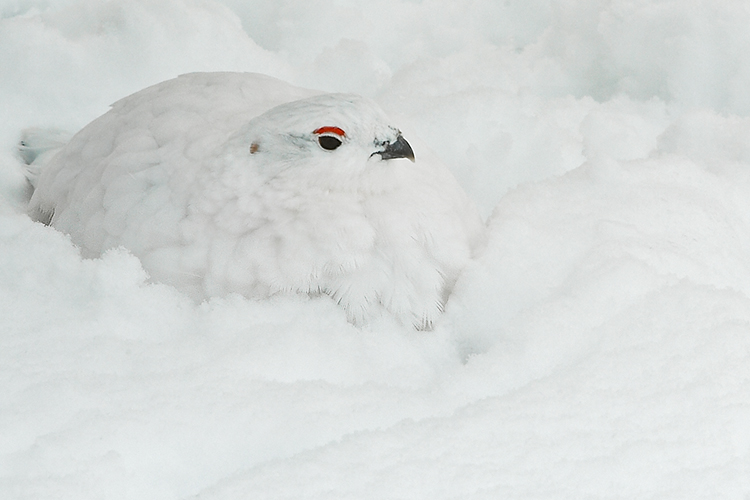
Availability: Undetermined - Enquiries?
In the Field
Hiding in Plain Sight. Cape Churchill, MB, Canada. October 25, 2004.
If it hadn't been for its red eyebrow I'm pretty sure I wouldn't have seen this Willow Ptarmigan. The ptarmigan was doing what they do best - hiding in plain sight! The red eyebrow is also what compelled me to pull out my camera - I found the contrast of it with the almost uniformly white scene compelling. I always keep my eyes open for contrast in colour or tone when photographing scenes or wildlfe. Eye-catching contrast can breathe life into what could have been a dull, drab image. Whether you're shooting in colour or in black & white, contrast can make a bad shot good and a good shot great!
Behind the Camera
Hiding in Plain Sight. Cape Churchill, MB, Canada. October 25, 2004.
Digital Capture; Compressed RAW (NEF) format; ISO 200.
Nikon D2H with Nikon 200-400 mm f/4G ED-IF AF-S VR lens @ 400 mm (600 mm equivalent with digital conversion factor) supported on bean bag. VR turned to "On" and in "Normal" mode.
1/40s @ f16; +1.0 stop exposure compensation from matrix-metered exposure setting.
At the Computer
Hiding in Plain Sight. Cape Churchill, MB, Canada. October 25, 2004.
RAW Conversion to 16-bit TIFF,, including first-pass sharpening, exposure compensation, and tone curve adjustment, using Phase One's C1 Pro.
All further digital correction on 16-bit TIFF file using Adobe's Photoshop CS, including additional selective tone curve adjustment, selective saturation enhancement, and selective sharpening for web output.
Conservation
Hiding in Plain Sight. Cape Churchill, MB, Canada. October 25, 2004.
Ten percent of the revenue generated by this image will be donated to the Yellowstone to Yukon Conservation Initiative.
Species Status in Canada*: This species is not designated as at risk.
The Willow Ptarmigan (Lagopus lagopus) is a small member of the pheasant family that is found across the tundra of North America. During the winter the Willow Ptarmigan is snowy white (as pictured above), but change their plumage to a brown mottled colour in the spring. While the species is generally common throughout its range, the population does cycle from abundant to scarce. The Willow Ptarmigan is currently harvested as a game bird.
The Yellowstone to Yukon (Y2Y) Conservation Initiative seeks to ensure that the world-renowned wilderness, wildlife, native plants, and natural processes of the Yellowstone to Yukon region continue to function as an interconnected web of life, capable of supporting all of its natural and human communities, for current and future generations.
*as determined by COSEWIC: The Committee on the Status of Endangered Wildlife in Canada


















